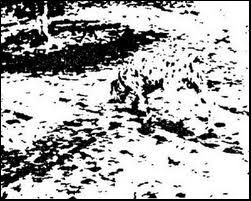Articolo in lingua inglese
PROACTIVE THINKING: ORDER AND THE GENERATION OF PREDICTIONS
by Uri Hasson
Our experience of the world is not determined only by careful analysis of physical properties of the environment, as processed through our sensory organs. Scientists have known for some time that our perception of the world is strongly influenced by our knowledge and our expectations. For example, the black and white picture below may appear to be a random splatter of dots until we detect an arrangement of dots in the center and finally make out a Dalmatian dog sniffing the ground. Once we have perceived the arrangement of dots that makes the Dalmatian, we will be able to see the dog each time we look at this picture. This shows how knowledge can affect perception from the top-down.
 How are these top-down expectations constructed in real-time,
and how are they constrained by the environments we are immersed in?
How are these top-down expectations constructed in real-time,
and how are they constrained by the environments we are immersed in?
A splatter of dots?
The research program NeuroInt aims to address these very questions. The core hypothesis of the program is that ordered environments; i.e., those that contain regularities, allow the generation of predictions about what is likely to happen next. These predictions in turn can help us to rapidly interpret stimuli. Being able to code for order is useful also when no order exists, since realizing that an environment is random can be a signal to focus closely on sensory inputs, without trying to involve prior knowledge in the perceptual process. Being able to recognize and code for order in the environment constitutes a distinct advantage, and we expect that certain cortical networks may play a role in this process.
Formally, order is the opposite of randomness. The degree of order/randomness in an environment can be quantified in different ways. Perhaps the most well known is Shannon’s Entropy, though various other features can capture distinct aspects of order. In our experiments, by generating environments that vary in their degree of order we aim to understand whether the human brain indeed codes for this feature, and to identify those neural systems that use order information to create predictions about what is likely to happen next.
To address these questions we use various neuroimaging tools. The use of a Magnetic Resonance scanner enables us to identify the brain regions sensitive to the degree of order in the environment by tracking whether different levels of environmental order are associated with different patterns of blood flow in certain brain regions. Another instrument we use is an MEG scanner (magnetoencephalograph) that allows us to study patterns of neural activity with high temporal precision, by measuring the effect of neural firing on the brain’s magnetic field.
The research takes place at the Center for Mind/Brain Sciences. The grant’s funding will support the hiring of 2-3 post-doctoral researchers, a data analyst, graduate students and research assistants for the duration of the project (four years). It will also support the work of Master’s Students for shorter durations.

